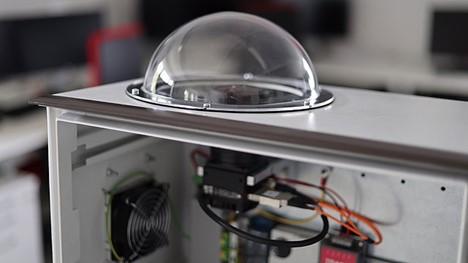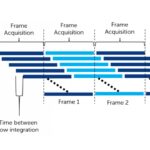In addition to healthcare, another prominent use of object recognition has emerged as the capability to see further than ever before has increased dramatically. The James Webb Space Telescope’s (JWST’s) ability to see further also results in a considerable increase in astronomical images. Sifting through these images for new information about the beginnings of the universe or cosmos is an ideal application for artificial intelligence (AI).
The COSMOS-Webb program uses a machine learning model known as Morpheus to examine pictures for pixel-level morphological classifications of cosmological images. To do this, a team of researchers are surveying half a million galaxies from a region of the sky looking for the oldest, fully-formed galaxies.
The images come from COSMOS-Near-Infrared Webb’s Camera (NIRCam) resulting from more than 200 hours of observation. Also, a Mid-Infrared Instrument (MIRI) concurrently maps a smaller region for additional analysis. Operating in the mid-infrared range, MIRI provides exceptional sensitivity and offers four observing modes. These include: imaging, coronography, low-resolution spectroscopy, and medium-resolution integral field spectroscopy.
With multi-band, high-resolution near-infrared imaging and 32,000 galaxies in the mid-infrared region, COSMOS-Webb will examine half a million galaxies to learn more about the universe in a way that has not been previously possible. Using machine learning software, several types of algorithms are used to improve JWST’s vision and the quality of the final images.
Look! Up in the sky! It’s a bird! It’s a plane! It’s ???
Nearer to home, government organizations such as NASA, and others are now (Dec. 22, 2022) talking about unidentified anomalous phenomena (UAP) which was previously termed unidentified aerial phenomena (UAP) to avoid the antiquated unidentified flying object (UFO) term. With an object from outside of our solar system, Oumuamua, discovered in Oct.19, 2017, the reality of interstellar objects and interest in them has increased. In addition to NASA’s Near-Earth Object Observations (NEOO) Program that funded the University of Hawaii’s Pan-STARRS1 telescope that identified Oumuamua, Harvard University’s Galileo Project is providing analysis of open scientific data collected using optimized instruments. The Galileo Projects three major avenues of research include:
- Obtain high-resolution, multi-detector UAP Images and discover their nature
- Search for and in-depth research on ‘Oumuamua-like interstellar objects
- Search for potential extraterrestrial craft (ETC) satellites
To obtain high contrast imaging, each telescope in the project will be part of a detector array of orthogonal and complementary capabilities from radar, Doppler radar and high-resolution synthetic aperture radar to high-resolution, large camera visible range, and infrared band telescopes. Researchers expect extensive artificial intelligence/deep learning (AI/DL) and algorithmic approaches to differentiate targeted technological objects of interest from false alarms caused by birds, balloons, commercial or consumer drones, and satellites.
With its SkyCAM-5, Julius Maximillians University of Wurzburg has been continuously monitoring the sky for UAPs since December 2021. The test platform for the autonomous detection of UAPs uses image processing algorithms with machine learning models applied to reduce false positive detections.
To filter out extraneous known objects, such as birds, insects or helicopters, are detected and filtered out by a convolutional neural network (CNN). Operators plan to extend the system in the future by adding elements and features in the future such as multiply sensors (cameras), a tracking system, and more.
References
How AI Enabled James Webb Space Telescope to Capture Stellar Images of Space, https://analyticsdrift.com/how-ai-enabled-james-webb-space-telescope-to-capture-stellar-images-of-space/
NASA Announces Unidentified Anomalous Phenomena Study Team Members, https://www.nasa.gov/feature/nasa-announces-unidentified-anomalous-phenomena-study-team-members/
‘Oumuamua, https://solarsystem.nasa.gov/asteroids-comets-and-meteors/comets/oumuamua/in-depth/
Galileo Project, https://projects.iq.harvard.edu/galileo/activities
SkyCAM-5, SkyCAM-5 – (uni-wuerzburg.de)


